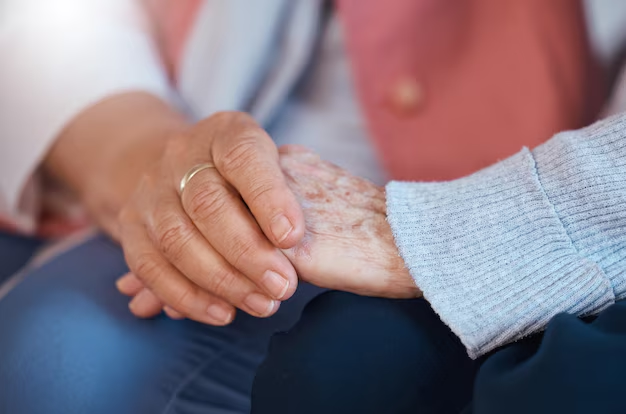Understanding Parkinson's Disease: Signs, Symptoms, and Next Steps
When it comes to health concerns, understanding the early signs and indications of a condition can be crucial for timely intervention. One such condition that affects millions worldwide is Parkinson’s disease. If you find yourself wondering, "How do I know if I have Parkinson's?" this article will take you through the essential signs, symptoms, and what steps you can take for a thorough understanding of this neurological disorder.
What Is Parkinson's Disease?
Parkinson’s disease is a progressive neurological disorder that primarily affects movement. It occurs due to the degeneration of dopamine-producing neurons in the brain. Dopamine is essential for transmitting signals in the brain that coordinate movement, and its decrease can lead to a range of symptoms.
Recognizing the Symptoms of Parkinson's Disease
Identifying the symptoms of Parkinson’s disease can be nuanced. Unlike other conditions, the symptoms can be subtle and develop gradually. Understanding these can aid in earlier consultation and management.
Motor Symptoms
Tremors: One of the hallmark symptoms of Parkinson’s is a tremor, often starting in the hands or fingers even when at rest. It's usually a rhythmic shaking or twitching.
Bradykinesia: This refers to slowed movement. Simple tasks may become difficult and time-consuming, as you might notice a reduction in spontaneous movement.
Rigidity: Muscle stiffness can occur in any part of the body. It can sometimes be painful and restrict the range of motion.
Postural Instability: A tendency to become unstable when standing may signal a loss of reflexes that adjust posture and balance.
Non-Motor Symptoms
Sleep Disorders: Individuals might experience insomnia, restless sleep, or REM behavior disorder, where they act out dreams.
Mood Changes: Depression, anxiety, and apathy can be early indicators, sometimes even preceding motor symptoms.
Cognitive Decline: Mild memory issues or slow thinking processes may be noted over time.
Autonomic Dysfunction: Symptoms like constipation, urinary issues, and blood pressure changes can occur.
Early Indicators: What Should You Watch For?
Spotting Parkinson’s early can be challenging, but paying attention to small changes can be pivotal.
Handwriting Changes: Micrographia, or gradually smaller and cramped handwriting, can be an early sign.
Changes in Speech: A person may speak softly, rapidly, or hesitate before talking.
Masked Face: Reduced facial expressiveness or less frequent blinking can be subtle indicators.
Risk Factors and Who Is Likely Affected
Understanding whether you might be at higher risk for developing Parkinson’s involves examining both genetic and environmental factors.
Age: Parkinson’s is uncommon in people under 50, and risks increase with age.
Gender: Men are more likely to develop Parkinson’s than women.
Family History: Having close relatives with Parkinson's increases your risk.
Environmental Exposures: Prolonged exposure to certain toxins or heavy metals might increase risk.
Seeking a Diagnosis: What to Expect
If you're concerned about potential symptoms, it's critical to consult a healthcare professional for evaluation. Here’s what typically happens when seeking a diagnosis.
Initial Consultation
- Medical History: You'll be asked about your medical history and symptoms.
- Physical Examination: A neurological exam will assess coordination, balance, and muscle strength.
Diagnostic Tests
While no definitive test for Parkinson’s exists, certain evaluations can help rule out other conditions:
- Imaging Tests: MRI or CT scans might be utilized to exclude other disorders.
- DaTscan: A specialized imaging technique that can confirm dopamine deficiency.
Living with Parkinson's: Management and Lifestyle Adjustments
Once diagnosed, managing Parkinson’s involves a multi-faceted approach focused on alleviating symptoms and maintaining quality of life.
Medication
- Dopaminergic Medications: These aim to replenish dopamine or mimic its action.
- MAO-B Inhibitors: Help slow the breakdown of dopamine in the brain.
Therapies and Support
- Physical Therapy: Helps improve mobility and flexibility.
- Occupational Therapy: Assists with daily activities and maintaining independence.
- Support Groups: Connecting with others can provide emotional support and shared coping strategies.
Emerging Research and Hope for the Future
Research into Parkinson’s disease continues to evolve, offering hope for better management and potential cures.
- Gene Therapy: Holds the promise of addressing genetic causes at their root.
- Stem Cell Research: Looks at regenerating damaged neurons to restore function.
Embracing Lifestyle Changes
Adopting a healthy lifestyle can significantly impact living with Parkinson’s.
- Diet: A balanced diet rich in antioxidants could support brain health.
- Exercise: Regular physical activity enhances muscle strength and coordination, reducing symptoms.
Finding Community and Resources
Isolation can compound the challenges of Parkinson's. Seeking community and resources can be empowering.
- Join Support Networks: Many local and online communities offer support and friendship to those dealing with similar challenges.
- Educational Resources: Staying informed about new research and strategies can help you manage the disease more effectively.
Key Takeaways
Understanding Parkinson’s disease involves recognizing both motor and non-motor symptoms, assessing risk factors, and seeking medical evaluation when necessary. By maintaining a proactive approach, incorporating lifestyle changes, and exploring supportive therapies, those diagnosed can manage the disease effectively and maintain a good quality of life.
Practical Summary: Steps to Take if You Suspect Parkinson's
- 👀 Observe Your Symptoms: Pay attention to changes in movement and non-motor functions.
- 👨⚕️ Consult a Professional: Seek evaluation from a neurologist.
- 🧪 Expect Tests: Be prepared for diagnostic tests for an accurate assessment.
- 🏃 Prioritize Health: Engage in physical activity and maintain a balanced diet.
- 👫 Seek Support: Connect with support groups and educational resources for guidance and companionship.
By understanding what to watch for and how to respond, you take an active role in your health journey, ensuring that if Parkinson’s is in your future, you’re ready to face it with knowledge and support.

Related Articles
- Are There Environmental Causes Of Parkinsons
- Can Alcohol Cause Parkinson's
- Can Concussions Cause Parkinson's
- Can Females Get Parkinson Disease
- Can Head Trauma Cause Parkinson's
- Can Parkinson Disease Cause Dizziness
- Can Parkinson's Affect Eyesight
- Can Parkinson's Affect Memory
- Can Parkinson's Affect Speech
- Can Parkinson's Affect Vision